1917 mens flannel sport or work shirts. The working-class Sans-Culottes literally without pants scorned the breeches worn by members of the aristocracy.
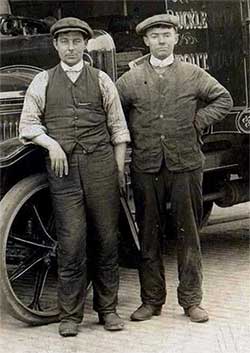
How Working Class Men Spent Their Time In The Early 1900s
Instead these workers wore.
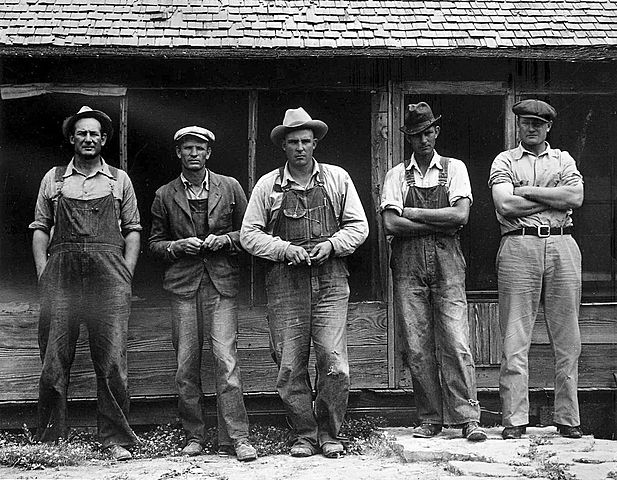
. Grey flannel suits were common worn with shirt tie and pocket handkerchief. A mans hat in those days was meant to coordinate with his outfit. This trend lasted through the 1900s up to the late 1910s.
1900 1909 The first decade of the 19th century is commonly referred as the Edwardian era a time when fashion reached a peak in luxury and elegance. Womens fashion was neat covering and detailed with ruffles buttons and lace in layers. Summer versions appeared in linen heavy cotton or seersucker.
Standard wear for men in nonmanual work was the sack suit or three-piece suit usually worn with a shirt with a detachable collar while working-class men generally wore trousers and a button-down shirt. For automobiling boys wore a duster with knickerbockers a flat cap and goggles. Two pairs of trousers 2-3 shirts a vest a light jacket a heavy jacket one or two caps suspenders or a belt and a pair of boots would have been a decent wardrobe for a working-class man.
Three-piece suits no longer had to match - they would sometimes have contrasting pieces. Most laboring men had a pair of trousers or overalls a belt work shirt cap socks boots and a winter coat. Bowler hats were no longer confined to working class men.
If you wonder how the heck that works take a look at my. Fashionable clothing for boys included sailor suits consisting a shirt with a sailor collar and trousers or knickerbockers. The bottom of the pant leg met the high stockings at the knee.
As mentioned the early 20th century was defined by a conservative fashion in combination with nature. The common utilitarian dress for laboring men before the twentieth century was made up of breeches or trousers jackets and waistcoats of hard-wearing materials such as moleskin fustian or corduroy. The blazer appeared at this time worn mostly for sports and casual activities.
A new work shirt or cap was a frequent Christmas gift. Mens ties were usually worn with most casual suits and sportgolf outfits. The bow tie was a popular and fun option as well as skinny silk or knit tie ties in solid or stripes.
Only the richest people were able to afford Paris fashions so many American designers became popular during the 1930s when money was tight. More 1910s Mens Fashion History 1910s Mens Casual Clothes Sportswear knitwear summer fashion Eveningwear Formal tuxedo morning suit and wedding clothes Mens Workwear Clothing for the working class men Mens Edwardian Motoring clothes For car drivers and workers Mens Vintage Boating. The common utilitarian dress for laboring men before the twentieth century was made up of breeches or trousers jackets and waistcoats of hard-wearing materials such as moleskin fustian or corduroy.
Even though the early 1900s were a time when urbanization was growing like wildfire and cities were popping up all over the map rural farming was still an important occupation of the working class. In some situations working women were the. Upper class men wore silk or wool broadcloth vests.
Tweed or check jackets worn with non-matching trousers were also popular and open collars were permitted for casual wear. Fashion in the period 19001909 in the Western world continued the severe long and elegant lines of the late 1890sTall stiff collars characterize the period as do womens broad hats and full Gibson Girl hairstylesA new columnar silhouette introduced by the couturiers of Paris late in the decade signaled the approaching abandonment of the corset as an indispensable garment. Working men wore vests of heavy cotton or denim.
1900s Fashion Hair Style. All the males in the world sticking to bowlers flat caps and top hats instead. Mens fashions still revolved around the suit.
Mens Fashion in the Early 20th Centory. The following are examples of the types of clothing men wore. Mens clothing in general changed much less frequently and less dramatically than womens clothing.
The repercusions of World War I. It comes to no surprise that during this time both men and women paid close attention to perfectly tailored clothing unique fabrics and elegant. The Boater Hat When.
Black shoes were the most acceptable though gray brown and tan were acceptable during the day. Modern ties also gained popularity beginning in this decade. These items had to last for many years before being replaced.
Like womenswear hats and gloves continued to be worn. Hair was worn with a side parting but slicked back with Brill cream. The Working Class in the Early 1900s.
Unless they were provided with uniforms working-class Edwardian era men needed clothing that was strong sturdy and durable. Menswear would further stall in the following decade due to the First World War. Regular ties with a.
In some situations working women were the. Even tiny girls were dressed in large hats 1900. Homemade clothing including homemade dressmaking was very common within this class.
Jackets became narrow with smaller lapels. As factories and industries grew farmers provided the food and agricultural resources that helped sustain life. Farytale Ive been working on an Edwardian dress for The litle mermaid Ariel.
Two French boys wearing knickerbockers 1900. By the end of the decade mens fashion largely looked the same as it did at the beginning. Broadcloth also used for jackets and trousers is a large piece of wool that is felted or shrunk in hot soapy water creating a fabric with no visible weave.
The colors were often in sweet pastels or a traditional set of a white blouse and a black skirt. At the turn of the century many began wearing the middle-class mens suit that originated in England as opposed to the more decadent knee-length frock coats and elaborate suits of the 1800s. There were certain magazines especially made for people in the working class such as Mabs.
Boys and younger men wore three piece suits for dress consisting of a coat vest and knee pants which were tight fitting and usually made with double knees. However fashion changed in the 20s as did many other things and today the fedora and its little brother the Trilby have become more than ever associated with male wearers. Working Class Women 1900s.
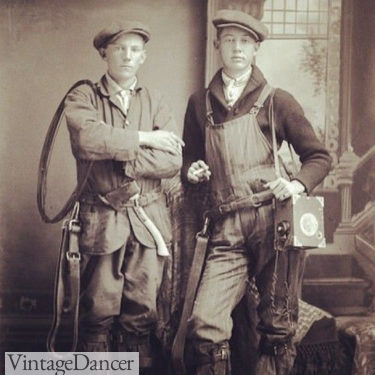
1910s Men S Working Class Clothing
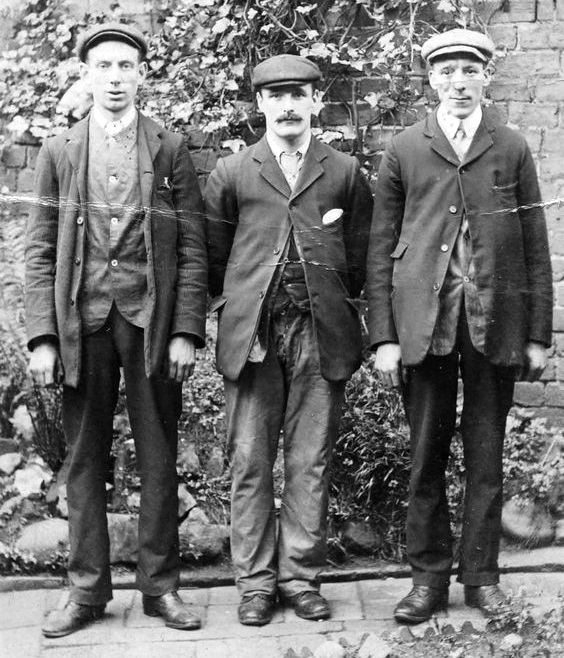
1910s Men S Working Class Clothing
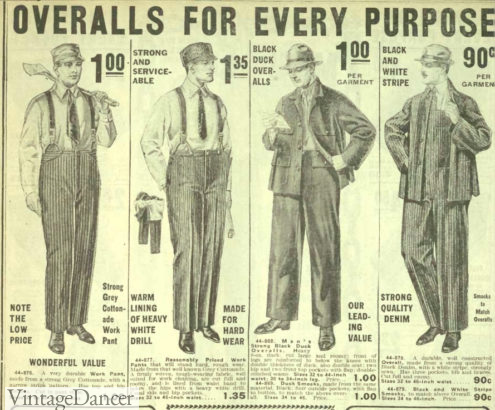
1910s Men S Working Class Clothing

Men S Lower Class 1900s Ideias Fashion Moda Moda Eduardiana
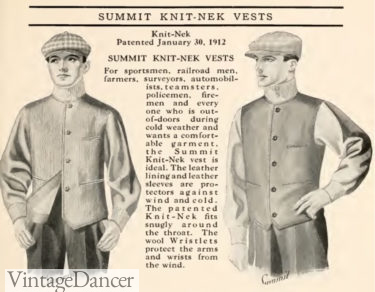
1910s Men S Working Class Clothing

Men S Apparel 1890 1930 Timeline Timetoast Timelines
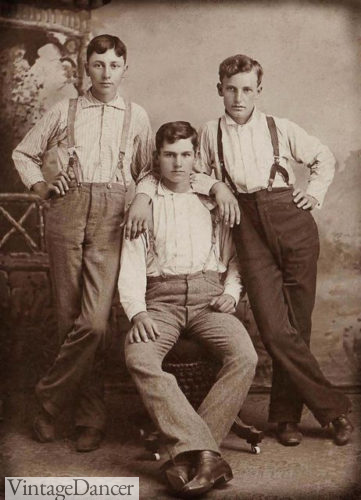
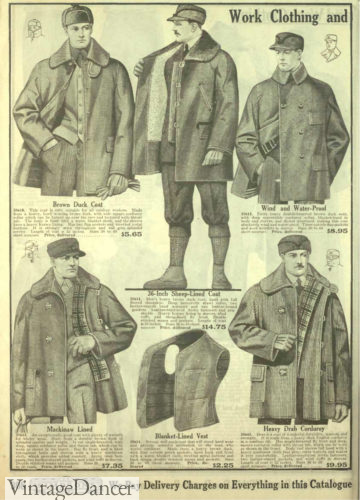
0 comments
Post a Comment